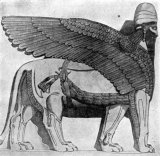
Worksheets and No Prep Teaching Resources
Reading Comprehension Worksheets
Ancient Mesopotamia

Ancient Mesopotamia
 Worksheets and No Prep Teaching Resources Reading Comprehension Worksheets Ancient Mesopotamia |
 Ancient Mesopotamia |
| edHelper's suggested reading level: | grades 9 to 11 | |
| Flesch-Kincaid grade level: | 9.26 |
|
Assyria
By Vickie Chao |

|
 1 Today, on the western bank of the upper Tigris River, stands an Iraqi city called Qal'at Sharqat. Thousands of years ago, this very site was once the capital of a great Mesopotamian empire. At the time, the place had a different name. It was called Ashur or Assur. The word Ashur eventually gave rise to the term Assyria, which was the northern part of Mesopotamia. People living in that region later became known as the Assyrians.
1 Today, on the western bank of the upper Tigris River, stands an Iraqi city called Qal'at Sharqat. Thousands of years ago, this very site was once the capital of a great Mesopotamian empire. At the time, the place had a different name. It was called Ashur or Assur. The word Ashur eventually gave rise to the term Assyria, which was the northern part of Mesopotamia. People living in that region later became known as the Assyrians. |
Create Weekly Reading Books
Prepare for an entire week at once! |
| Leave your feedback on Assyria (use this link if you found an error in the story) |
 |
Ancient Mesopotamia
|
 |
High School Reading Comprehensions and High School Reading Lessons
|
 |
Social Studies
|